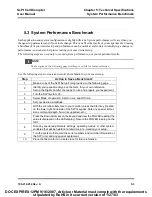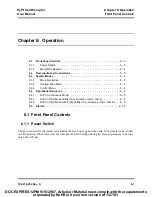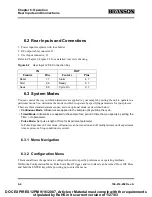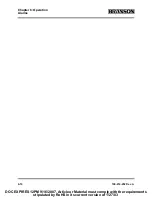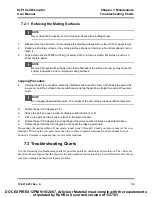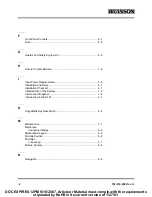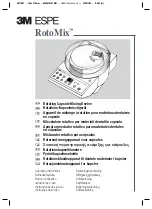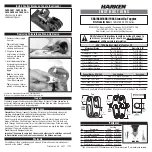
SLPt Cell Disruptor
Chapter 7: Maintenance
User Manual
Maintenance and Troubleshooting
100-214-252 Rev. A
7-1
Chapter 7: Maintenance
7.1
Maintenance and Troubleshooting
- - - - - - - - - - - - - - - -7 - 1
Reconditioning the Converter/Tool Interface
- - - - - - - - - - -7 - 2
Refacing the Mating Surfaces- - - - - - - - - - - - - - - - - -7 - 3
- - - - - - - - - - - - - - - - - - - - - -7 - 4
- - - - - - - - - - - - - - - - - - - - - - -7 - 7
7.1 Maintenance and Troubleshooting
The SLPt Cell Disruptor is a self-contained system that requires no internal servicing, except for a protective
fuse, and there are no user serviceable parts inside the unit. The ultrasonic tooling (microtips) may require
periodic inspection and maintenance to ensure optimum performance. The tooling components are subject
to wear and may require replacement after a period of time, depending on the applications.
If you have a problem operating your unit, refer to Table 7.1
’System Trouble Analysis Chart’
locate the symptom that most clearly describes your problem.
Tip Erosion
Microtips can erode. Tip erosion is a side effect of the cavitation process that occurs when liquids are
exposed to ultrasonic energy. The rate of erosion depends on the intensity of power applied, the corrosive-
ness of the liquid being treated, and the amount of use.
Periodically inspecting the tip will help you recognize erosion early. As erosion progresses, the color of the
tip changes from its original polished appearance, first to light grey and then to dark grey. Concentric rings
begin to appear, and finally the tip becomes rough and pitted, resulting in loss of power output. As it erodes,
the tip can also introduce metal particles into the solution, causing it to darken or discolor.
Eventually, erosion may become significant, at which point the tip will require replacement.
DOC EXPIRES 12PM 9/16/2007. Article or Material must comply with the requirements
stipulated by RoHS in its current version of 1/27/03



